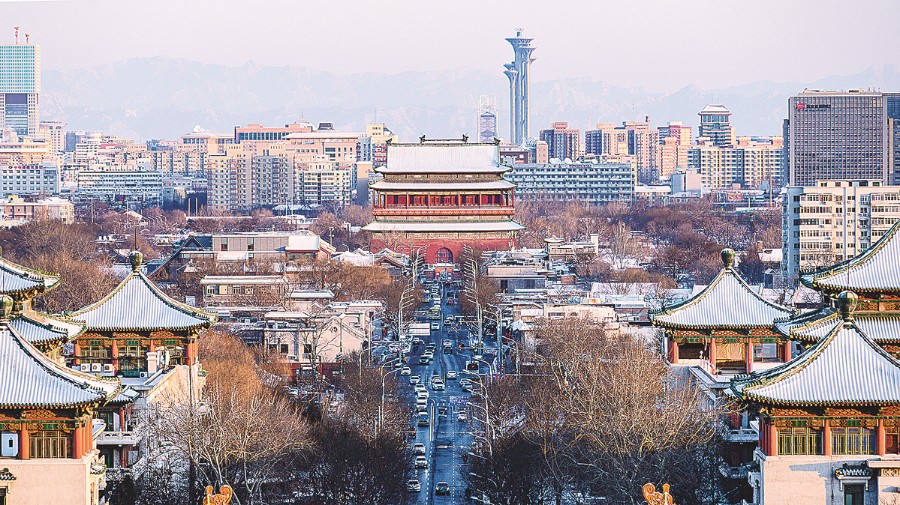Protection plan released for Beijing's Central Axis

The central axis stretches for 7.8 kilometers through the Chinese capital. [Photo provided to China Daily]
Capital city's goal of achieving UNESCO World Heritage status moves forward
The protection management plan for Beijing's Central Axis from 2022 to 2035 was released on Saturday, marking a new stage in its conservation, sustainable development and application as a UNESCO World Heritage Site.
According to an official from the Beijing Cultural Heritage Bureau, the plan is one of the necessary steps toward bidding for UNESCO World Heritage status, and its release and implementation will play an important role in the protection and management of the capital's central axis.
Alongside regulations on the protection of the Central Axis carried out on Oct 1 last year, the plan is in line with the requirements of World Heritage conservation and provides a directional strategy and basis for conservation management.
According to Ye Nan, who is in charge of the planning work related to the conservation of the Central Axis and its bid for UNESCO World Heritage status, the application, the plan and the regulations are complementary in the bid.
"The plan can help us clarify how to protect and manage heritage," Ye said.
The 7.8-kilometer-long axis, which can be traced back to the Yuan Dynasty (1271-1368), stretches from the Yongding Gate in the south, to the Bell Tower and Drum Tower in the north.
The plan rationalizes the conservation area into a heritage zone and a buffer zone and specifies the boundaries for the first time.
The heritage zone covers an area of 5.9 square km and includes 15 elements, among them the Forbidden City, the Imperial Ancestral Temple (Taimiao) and the Temple of Heaven.
The buffer zone covers a wider area of 45.4 sq km.
Emphasizing the conservation of the old city of Beijing, the plan's multiple goals include optimization of regional functions, improvement to livelihoods and environmental enhancements to achieve the overall protection and revival of the area.
A comprehensive exhibition center will be built at the Capital Museum together with thematic exhibition centers and special cultural stations along the route of the axis.
One of the highlights of the plan is establishing a heritage monitoring system to improve the level of preventive conservation management to create an information system for heritage archives and conduct research on key issues to deepen understanding of Beijing's Central Axis, as well as its old city.
A training program will be devised to train individuals in areas such as heritage conservation, historical research, cultural creativity and information technology.
The plan also formulates a number of support strategies for property owners, local residents, foreign visitors, experts and scholars as well as the general public to enhance social participation in heritage conservation.
Lyu Zhou, director of the National Heritage Center at Tsinghua University, thinks Beijing's Central Axis not only expresses the long-term continuity and development of Chinese civilization but also demonstrates its pluralistic history.
As protection of the historical area has aroused the public interest and resulted in a wide range of social participation, Lyu believes the Central Axis has strongly contributed to continuity as well as innovation in Beijing's history and culture.
"It is a great example of social cohesion and promotes sustainable development," said Lyu.
























